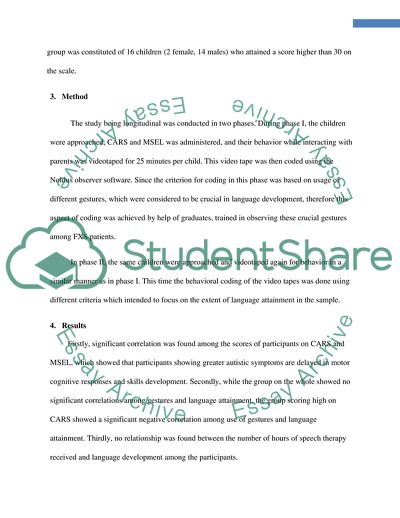Relationships Between Early Gestures and Language Development in Article. https://studentshare.org/medical-science/1748182-relationships-between-early-gestures-and-later-language-in-children-with-fragile-x-syndrome
Relationships Between Early Gestures and Language Development in Article. https://studentshare.org/medical-science/1748182-relationships-between-early-gestures-and-later-language-in-children-with-fragile-x-syndrome.


